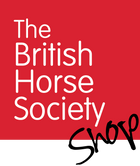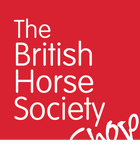A guide to handling and training unhandled and semi-feral foals in an ethical and gentle way. This guide will help you as a breeder or new owner to train your foal without fear or force and to bring them round to being handled and friendly within hours and days rather than months and years. Applicable to foals born in a semi-feral environment, those that have been traumatised by manhandling or even domesticated foals that are just wary of humans. Suitable for every kind of horse lover from the first time handler to the most experienced. This method will become the new tradition in foal handling.
In this long awaited follow-up to the highly praised Cobs Can! Omar Rabia introduces the idea of a systematic, progressive series of exercises designed to develop suppleness, collection, obedience and rideability in cobs. He discusses the prerequisites of starting this journey and the reasoning behind working cobs in-hand before ridden work is commenced. While the exercises are set out in a progressive order, each exercise offers particular benefits and works on 'target areas', so you can choose those exercises that will most benefit your cob before moving onto other exercises in the series. Progression within each exercise is explained so that riders know when to move onto the next step within the exercise. From the basic work to more advanced, every cob rider will find something of value here.
Lungeing and Long-Reining, published in association with The British Horse Society, is a step-by-step guide to training, exercising and suppling horses from the ground, written by Britain's leading exponent of the art.The book begins with advice on handling untrained youngsters and works through a logical training progression, culminating in advanced dressage movements.Straightforward guidance is given on:Training foals and young horsesLungeing equipment and techniqueIntroducing long-reins and early lateral workBacking and riding young horsesLungeing over poles and fencesAdvanced long-reining; including cantering, rein-back, shoulder-in, travers, half pirouettes, half-pass, renvers, canter half-pass, canter pirouettes and tempi flying changes.Piaffe and passage Olympic dressage rider and trainer Jennie Loriston-Clarke has broken and schooled countless dressage and jumping horses, and initially uses lungeing and long-reining to establish the horse's basic education and create mutual respect between horse and handler. The knowledge she has gained over the years while working with novices and older 'difficult' horses sent for retraining, is distilled in this book into simple instructions, so that others can avoid making costly mistakes when training their horses.The goal throughout is to produce a horse that is confident, keen and happy in his work - which should be the aim of every trainer.Illustrated with specially commissioned sequence photographs, this book will prove particularly valuable in the early training of young horses, as well as in improving or retraining older horses, and refining dressage movements in advance horses.
Whether first time horse owner or seasoned professional, you are guaranteed to come away with a detailed, systematic, and comprehensive method for a happier, healthier equine partner.Lameness is the most common cause of poor performance in the horse. This makes management of his soundness over the long term integral to both his general well being and his ability to participate in recreational and competitive activities.Unfortunately, most equine caretakers are unable to perceive abnormal movement in the horse, extending the period between the onset of a problem and its eventual treatment, and the longer an issue is allowed to persist, the greater the chance that it will progress. Many equine veterinarians also find it difficult to visually decipher lameness, which leads to lengthy, expensive, and often inaccurate diagnostic work ups. It is with these two key audiences in mind that Dr. Bob Grisel has created a book unlike any other.With hundreds of illustrations, dozens of charts, and links (via scannable QR codes within the book) to online videos of explanatory case studies, readers are given a complete course in observing, identifying, and decoding equine lameness. Dr. Grisel helps you interpret what is seen, plain and simple (no need for medical knowledge of equine anatomy and pathology).

